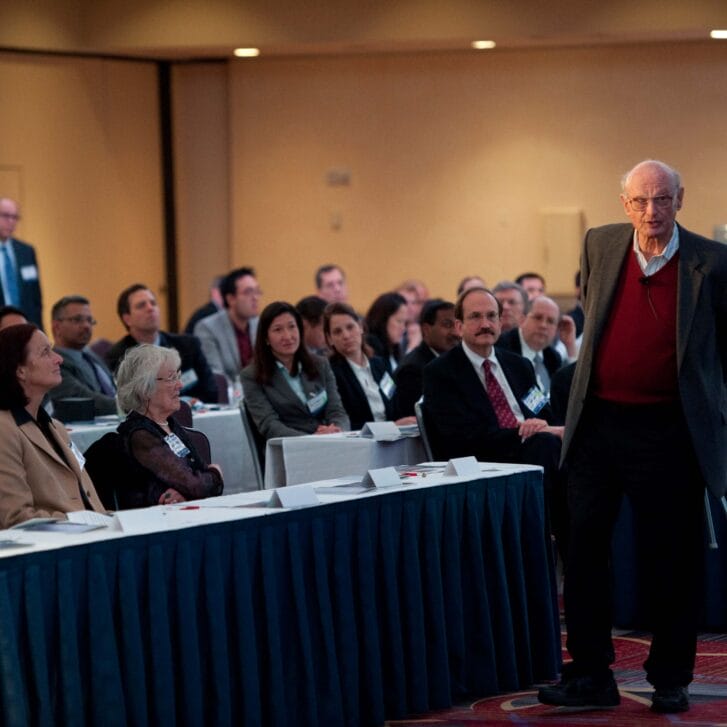 Kicking off a new academic year is always an exciting time, but that is particularly the case this year as we’re immersed in designing–and building–classrooms of the future. Wharton’s upcoming move to a new San Francisco facility has provided us an opportunity not only to design the most cutting-edge and connected classrooms possible, but also to bring that technology back to our campus in Philadelphia. As a top business school, our constituents expect a 21st-century learning environment, and we are providing that on both coasts.
Kicking off a new academic year is always an exciting time, but that is particularly the case this year as we’re immersed in designing–and building–classrooms of the future. Wharton’s upcoming move to a new San Francisco facility has provided us an opportunity not only to design the most cutting-edge and connected classrooms possible, but also to bring that technology back to our campus in Philadelphia. As a top business school, our constituents expect a 21st-century learning environment, and we are providing that on both coasts.
In designing the new space in San Francisco, we’ve investigated and tested many technologies to determine which would impact our students’ educational experience the most. The changes most visible to our West Coast students will be in the classrooms and group-study rooms, which are all designed to support Wharton’s commitment to connected and lifelong learning.
As a result, the new campus will feature digital, high-definition (HD) classrooms and group-study rooms. The classrooms will be production ready for streaming or broadcasting classes, speaker series and networking events in HD to students, alumni and the world.
The group-study rooms will offer HD videoconferencing and innovative controls to create shared digital workspaces. Student teams will be able to work with each other down the hall or back at home, and with their peers in Philadelphia or even in other parts of the world.
To further ensure that the new facilities will be the most up to date they can be, we’re collaborating with Shen Milsom & Wilke and Creton to allow for seamless and rapid adoption of new technologies when they become available. We don’t want to design classrooms only to find them outdated in a few short years.
Another significant change for students on both coasts is our increased use of tablets. After beginning an iPad pilot program last May, in which we gave every executive MBA student an iPad, we’ve studied how they consume content, create content and collaborate. Our goal is to determine how the devices can make the biggest impact on their education.
 By using tablets and other devices, we’ll be able to move away from the traditional computing lab model so that we can provide computerized services in a virtual environment. We want to be able to run our computer labs from anywhere, negating the need for a physical machine to run applications. Similarly, we’re looking at our SPIKE student portal to enhance it with rich mobile apps so that information and programs can be accessed at any time.
By using tablets and other devices, we’ll be able to move away from the traditional computing lab model so that we can provide computerized services in a virtual environment. We want to be able to run our computer labs from anywhere, negating the need for a physical machine to run applications. Similarly, we’re looking at our SPIKE student portal to enhance it with rich mobile apps so that information and programs can be accessed at any time.
As we move ahead, we’ll continue to ask students on both coasts for their feedback on the new technology. Not surprisingly, some of the best ideas come from students who are using the technology on a daily basis.
It’s exciting to be on the forefront of creating classrooms of the future. Now that the school year has begun, we’re looking forward to testing and applying the new technology that will define what it means to go to school in a 21st-century learning environment.
























